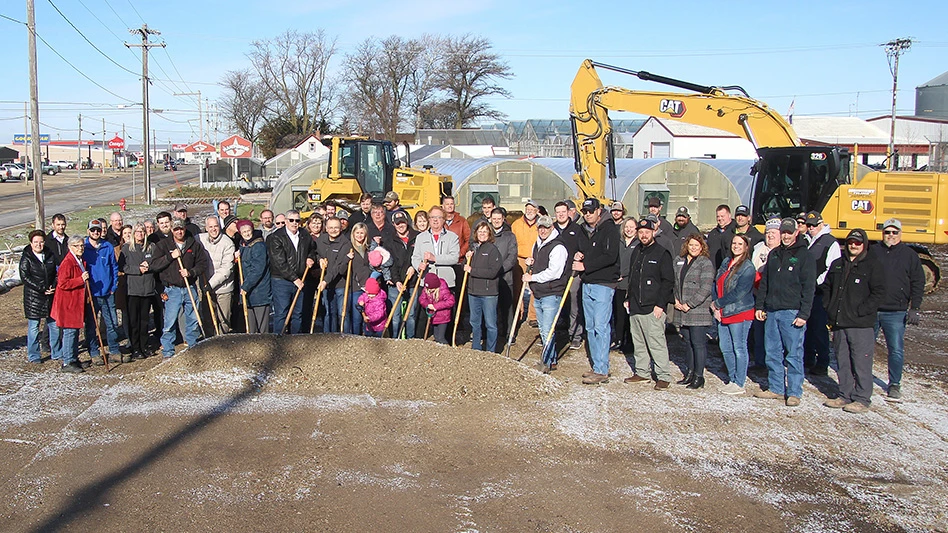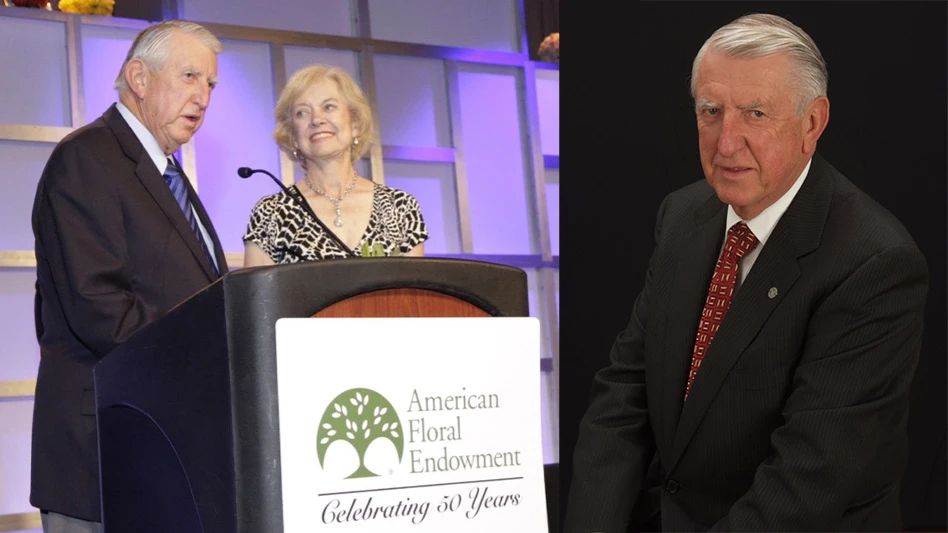
On YouTube, a young woman sits in a high-backed gaming chair. She has long, straight, brunette hair and an easy smile. She faces the camera, her face ring-light lit. Like many videos you’ll find just clicks away from hers, the 27-minute watch is full of quips and ironic asides. There are sound effects and snappy editing.
But what’s unique to this video and this YouTuber is the subject matter: DIY Tissue Culture: How to Get Started for Less Than $200.
The video is one of 41 on the YouTube channel Plants in Jars, created by 29-year-old Floridian Laur Frazee. In the four years since the launch of her channel, Frazee has racked up nearly 76,000 subscribers and nearly 2.5 million views. Those are significant numbers, considering the niche focus on at-home amateur plant propagation.
Frazee has tapped into a community of horticulture outsiders and fringe plant biologists who are clearly hungry for the information she provides. She is one of thousands with home labs who are propagating and in some cases engineering plants for their own enjoyment.
These amateurs may represent a new pool of innovative growing talent for an industry that relies primarily on university graduates to fill technical greenhouse positions.
From home propagation to Plants in Jars
Frazee wasn’t always a plant geek with a home propagation lab. Her previous career was project management for a Florida real estate company. But things changed during the 2020 COVID-19 lockdown.
Like many people, Frazee was looking for something to do from home. So, she started buying and reselling non-patented, luxury tropical houseplants.
“It was like the Philodendron Pink Princess, the Silver Sword and Monstera Thai Constellation, things like that, that we see not being expensive anymore,” Frazee says. “That got me interested in how plants are mass produced and how plants are created, which led me to learning about plant tissue culture. And I remember learning you can clone your plants and just thinking that was the coolest thing ever.”
So, Frazee set about learning how to clone and propagate at home. But the knowledge wasn’t easily accessible outside of the classroom. The only thing she could find was a kind of cult-favorite for the home plant biologist, the book “Plants from Test Tubes: An Introduction to Micropropagation” originally authored in 1983 by Lydiane Kyte and most recently updated by Holly Scoggins.
Frazee began to document the efforts to teach herself tissue culture. Her tools were microwaves, pressure cookers, whatever glassware she could source, still air boxes made from hacked plastic containers and her precious tropical plants.
“I didn’t really know what I was doing, but I was just trying it and then I would upload it to YouTube,” she says. “And I was able to learn a lot that way too, because people who have microbiology experience or experience doing aseptic technique would comment and give me advice.”
Frazee’s come a long way since those early videos. She now operates out of a business incubator with a far more sophisticated lab that includes professional equipment like a laminar flow hood.
And she’s even collaborating with cutting-edge plant scientists. Recently, she worked with Keith Wood of Light Bio to explore the glow-in-the-dark Firefly petunia on her channel.
She will soon be launching her own line of propagation supplies to keep her engaged community of amateur plant propagators geared up and flourishing.
“The crux of it is that I really believe that information should be free-flowing and that everyone should have access to education,” Frazee says. “When I was trying to learn, there was basically no information on how to do it. I just like distilling information in a way that’s easy for people to understand and give them tools to learn how to do tissue culture, if that’s something they’re interested in doing.”
But she’s not the only one sharing information about how to work with plants on a cellular level. Others are opening the black box of genetics for the at-home amateur plant scientists, too.

‘An artist moonlighting as a biologist’
As a high school student, Sebastian Cocioba made extra cash by dumpster-diving for abandoned orchids behind the local Home Depot and reviving them for resale. It was a good hustle, but more than being a way to make money, it was the gateway to his future as an outsider biochemist exploring plant genetics.
The way the orchids could be made to live again fascinated him. As he studied the flower’s mysteries, he discovered the micro-propagation community, and a fire was lit.
Like Frazee, Cocioba’s education began with learning tissue culture through the book “Plants from Test Tubes.” As he learned, he began searching for lab gear that would make his home setup more sophisticated. He found he could buy used equipment on eBay, figure out how to repair it and flip it for a profit, like those discarded orchids of his youth.
The repair and resale scheme did a couple things for Cocioba. First, it inspired an interest in deep tinkering and finding how things work. Second, it allowed him to pay for a few years of college at Stony Brook University, where he worked in Vitaly Citovsky’s biochemistry lab.
Due to family and personal reasons, his time at school was brief — just two years. But Cocioba was not sated.
“I got bit by the research bug so badly that I felt, like, withdrawal symptoms,” he says. “And so out of a desperate need for feeling that high again, I thought, could I do genetic engineering at home?”
The answer wasn’t simple. In many countries outside of the United States, amateur bioengineering is a crime. But the U.S. exists in a bioengineering gray zone, where tinkering with genes is relatively unprohibited.
“It’s actually kind of the Wild West a little bit, where one person will mess it up and then it’ll be ruined for everybody,” Cocioba says. “But as long as we act responsibly, we can actually do a ton within that space as an amateur.”


He’s been documenting what he’s been doing in an online lab notebook. One of his major areas of focus is on a petunia of unknown provenance that he hopes will become what he calls his “canvas.” He named the flower Alice. It was discovered at a roadside farm stand by his mother, labeled simply as “white petunia” in crayon. It wasn’t particularly remarkable, but it has since proved to be a flower particularly amenable to cloning and very receptive to genetic manipulation — perfect for a biologist whose passion is in art.
“I mean ultimately, I would love for my work to end up in a gallery and have a small show and a botanical garden with my plants, and that’s my art,” he says.
He’s already made a foray into bioengineering as art. For a show called “The Future Will Be Grown” at the NYC School of Visual Art Bio Art Lab, Cocioba worked on a project that inserted the gene responsible for the myoglobin protein in animals into a beefsteak tomato. The project was successful in that tests on the plants showed the gene was being expressed, making the “beef” in beefsteak tomato close to literal.
Art projects like the so-called “myotomato” are meant to spark thoughtful consideration about what plants are capable of. Robust regulations in releasing genetically modified plants would keep it from entering the market. But Cocioba is also working on projects where art and plant retail could converge.
He’s currently working with a start-up called Senseory to bioengineer plants that produce unique, room-filling fragrances.
“My Holy Grail is to make a petunia that smells like a campfire,” Cocioba says. “And creating beautiful reminiscent smells that can replace the petrochemical scent products.”
Along the way, Cocioba is committed to keeping his research open for everyone to see and learn from. Like Frazee, he’s deeply concerned about keeping knowledge free. He explains that as he develops his petunia canvas, for instance, it will be an open-source plant for all to use.
In fact, on his website atinygreencell.com, he is already selling open-source tools meant to help people learn and experiment. One of the products is the Rainbow Chromoprotein Plasmid Set, which allows color to be expressed in E. coli cells. The description states the “plasmids are open source, made with love in Huntington, NY, and are free of any Material Transfer Agreements. The plasmids are licensed under Creative Commons 4.0.”


What growers can learn from outsiders
Labor is a constant concern in the horticulture industry, and there is a need for employees at all levels of green business. Some positions can be filled with seasonal labor. Other positions can be filled with recent graduates from university horticulture programs from across the United States. But enthusiastic outsiders are a valuable pool of potential talent, according to Holly Scoggins, associate professor emerita of horticulture at Virginia Tech. (She also updated the “Plants from Test Tubes” book.)
“A significant portion of our industry’s talent comes from outside horticultural higher education — those who are self-taught, those seeking mid-life career changes,” she says. “It’s the ‘enthusiast’ part that really counts.”
Both Cocioba and Frazee are examples of people for whom higher education wasn’t necessarily an option. For Cocioba, there were family and financial issues that cut higher education short. And Frazee had already established a career outside of horticulture before her plant interest developed.
But both had the passion for plants to sustain a self-directed education. Moreover, they built a skill-sharing community that filled in gaps where books might not have had the answers.
“Those paths have been taken by many who’ve gone on to open their own businesses or work with others in the industry. Horticultural science is a very broad discipline to pack into four or five (or six) years of higher education,” Scoggins says. “To those interested in specialty niches, especially if they’re already equipped with some science background, there’s a wealth of science-based horticulture resources out there — the International Plant Propagators’ Society (now called the International Plant Production Society) is but one example.”
Skill-sharing is at the heart of what Cocioba and Frazee do, largely because they want plant knowledge to be accessible for everyone — whether they are a hobbyist or seeking skills to earn money. Both agree that one of the enduring qualities of horticultural science is that it doesn’t necessarily require talent in order to be successful at it.


“There’s no Mozarts in biology,” Cocioba says. “There is an enormous potential, especially in biology, for literally anyone that has even an average intelligence. If you are just capable of being interested in something, I can guarantee you that you will become a good biologist.”
Beyond potential talent, growers should be aware of how much energy exists in the amateur micropropagation community. Because they work outside of standard academic and industry groups, the way they approach plants will likely be more flexible and creative.
There could be a great deal gained in engaging with amateurs and sharing information to both enrich business and provide more knowledge to those seeking new and different paths into the industry.
“There certainly are plants worth propagating, even if they don’t go on to sell hundreds of thousands of units. Folks are out there digging deep and getting experience,” Scoggins says. “Advances by anyone who ‘breaks the code’ for difficult-to-prop species can be useful to others if that information is shared.”
And if nothing else, amateurs show how much can be done with very little investment and a great deal of passion. Frazee notes that it doesn’t take much to set up a small propagation lab that could allow a medium-sized business to play and experiment with plant material.
“I would guess that there will be a trend towards more growers having their own tissue culture laboratories in the future,” she says. “I think there’s probably an intimidation factor about starting a tissue culture laboratory because it feels like a totally different type of business than they’re probably used to doing. But I would say to those people that setting up your lab doesn’t have to be that expensive.”
For Cocioba’s part, he encourages growers to take a risk. “Is there room for me to have developed a line that I’m really interested in that’s fully deregulated and got the USDA stamp that they’d be willing to host in their collection for sale?” he asks. “Amateur breeders are a small business. And that should be stated front and center: support small businesses.”
Editor's note: It is illegal to propagate and sell patented plants without authorization. Always research patents and pending patents before selling any plant. USDA/APHIS requires import authorization for certain bioengineered plants.
This article appeared in the April 2025 issue of Greenhouse Management magazine under the headline "The outsiders."
Patrick Alan Coleman is editor of Greenhouse Management magazine. Contact him at pcoleman@gie.net.

Explore the April 2025 Issue
Check out more from this issue and find your next story to read.
Latest from Greenhouse Management
- The HC Companies, Classic Home & Garden merge as Growscape
- Eason Horticultural Resources will now officially be known as EHR
- BioWorks receives EPA approval for new biological insecticide for thrips, aphids, whiteflies
- ScottsMiracle-Gro transfers cannabis subsidiary to focus on core lawn and garden business
- Ellen Mackenbach-Lakeman appointed new CEO of Dümmen Orange
- Southern Garden Tour sets 2025 dates for trial garden open houses
- Belgian thermal screen manufacturer Phormium launches Noctis Thermo
- New book explores plants that thrive in Rocky Mountains





